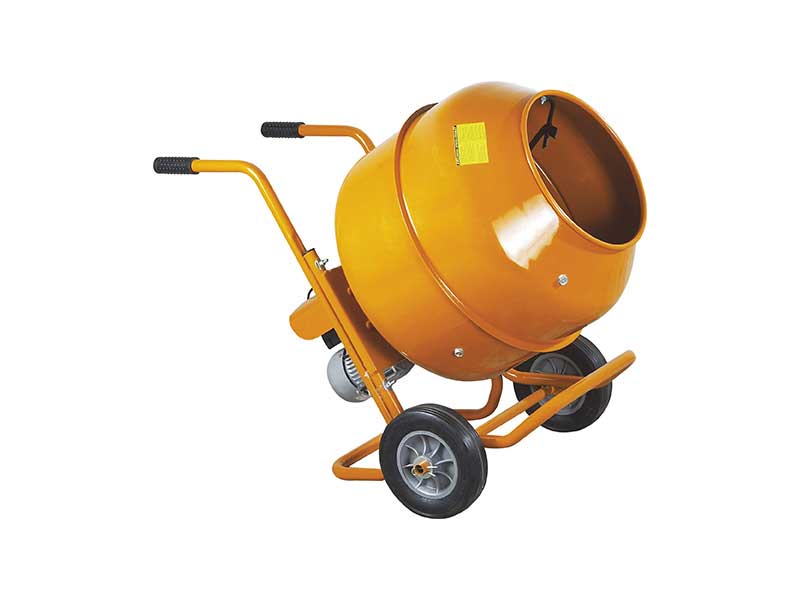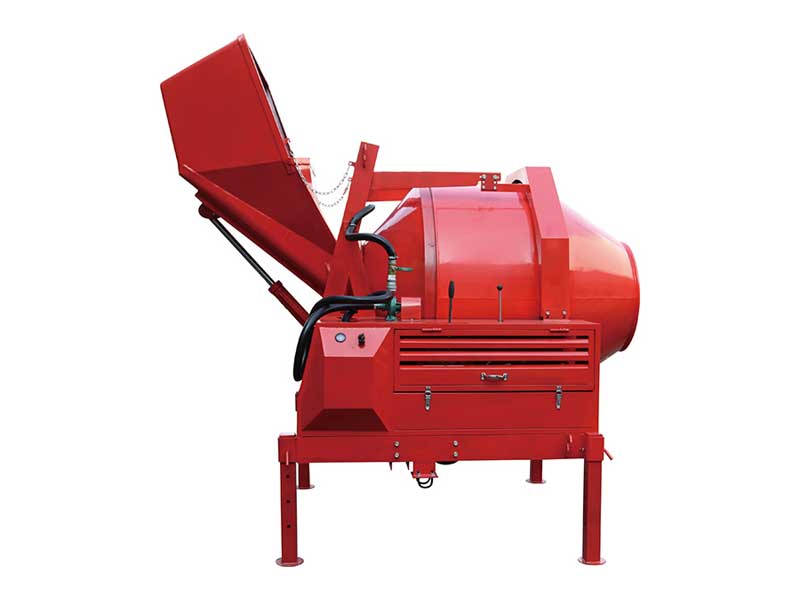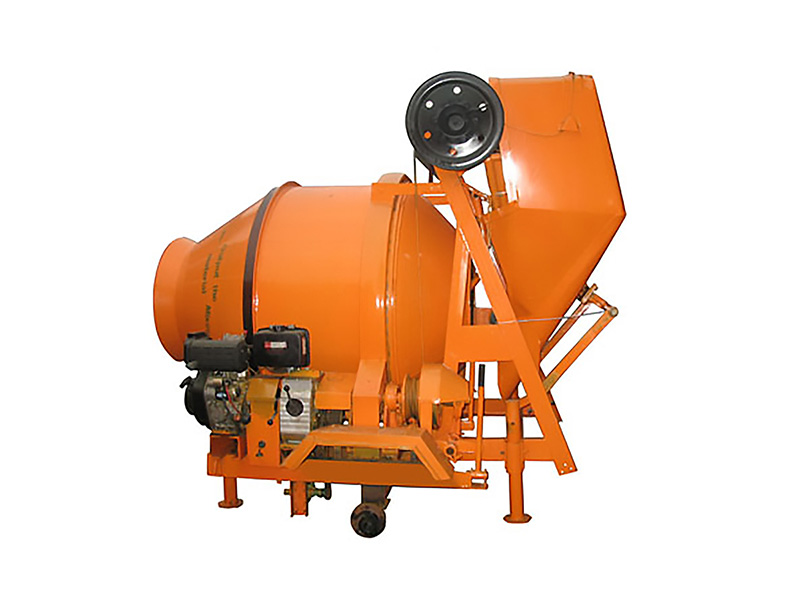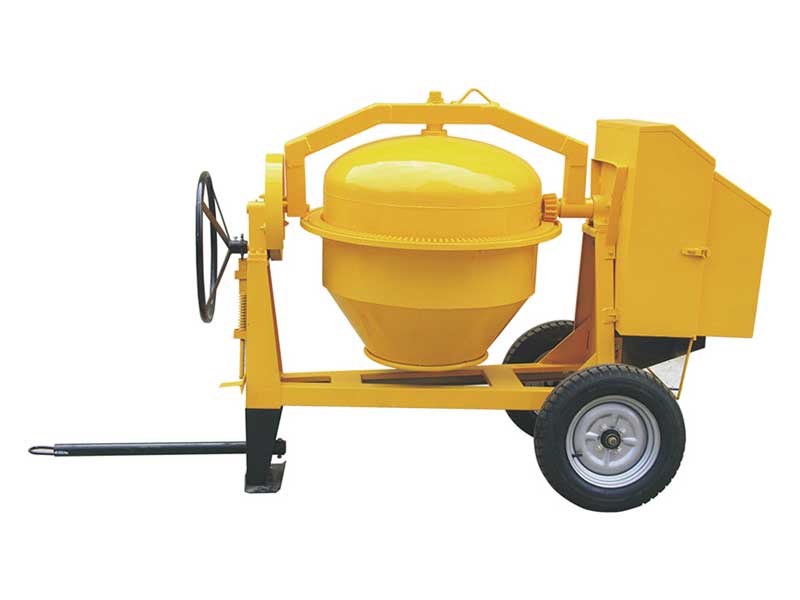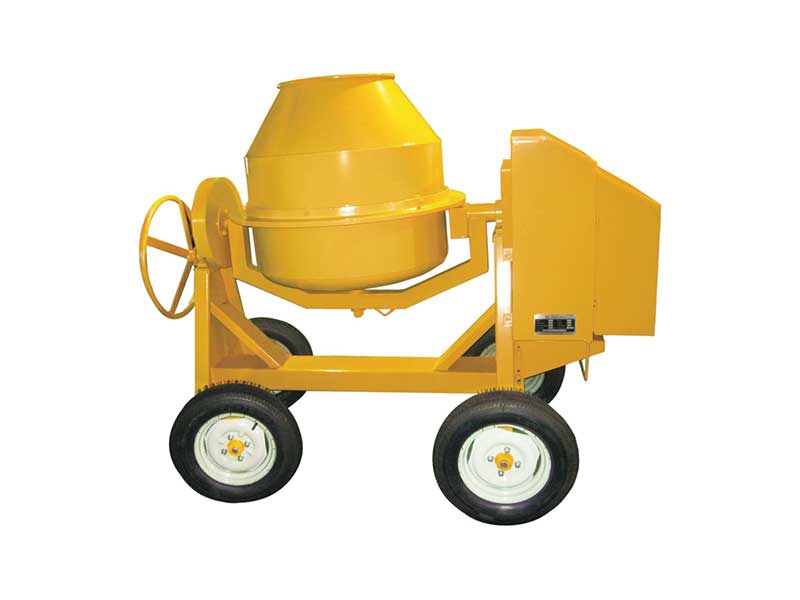HCM120 Portable Concrete Mixers With with 120L Drum Capacity
Drum Capacity(L)
120
Drum Speed(Times/min)
28-30
G.W/N.W(kg)
61/57
HCM140/160 Portable Concrete Mixers With 140/160L Drum Capacity
Drum Capacity(L)
HCM140: 140; HCM160: 160
Drum Speed(Times/min)
HCM140: 28-30; HCM160: 28-30
G.W/N.W(kg)
HCM140: 64/62; HCM160: 74/70
HCM350HT Concrete Mixers With 7.5KW Power
Discharge Capacity(L)
350
Charge Capacity(L)
560
Power
10HP/7.5KW
HCM350R Concrete Mixers With 7.5KW Power
Discharge Capacity(L)
350
Charge Capacity(L)
560
Power
10HP/7.5KW
HCM350C Concrete Mixers With 5.5KW Power
Discharge Capacity(L)
350
Charge Capacity(L)
560
Power
7.4HP/5.5KW
HCM350T Concrete Mixers With 350L Drum Capacity
Drum Capacity(L)
350
Drum Speed(Times/min)
100
G.W
328
HCM350F Concrete Mixers With 350L Drum Capacity
Drum Capacity(L)
350
Drum Speed(Times/min)
100
G.W
348
In any construction endeavor, the initiation or culmination often revolves around the critical task of concrete preparation. This process, ostensibly straightforward, entails amalgamating cement with water and an aggregate, such as sand or gravel. Nonetheless, the resulting concrete's strength and longevity hinge significantly on the water-to-cement ratio and the blend's uniformity.
Engaging in this mixing manually, though feasible, is fraught with challenges. Employing a wheelbarrow and shovel for blending dry concrete mix and water is not only laborious but also inconsistent in achieving a homogenous mixture. Here, the superior efficacy of concrete mixers becomes evident. These devices facilitate seamless and precise mixing, transporting the concrete directly to the requisite site, thereby enhancing the quality and efficiency of the construction work.
When considering the acquisition of a concrete mixer, various factors merit attention. The diversity of mixers available is vast, and the optimal choice depends on the project scope and frequency of use. Key considerations include the mixer's capacity, ease of cleaning, weight, and storage footprint, as concrete mixers can be cumbersome to store.
Mixers manifest in different forms, notably handheld and barrel types. The conventional barrel mixer comprises a large, rotatable drum powered by an engine. This design allows for easy mixing and dispensing of the concrete. In contrast, handheld mixers, more compact and suitable for smaller-scale tasks, excel in mixing mortar or stucco but can also manage minor concrete jobs.
The composition of the mixer's barrel is another pivotal aspect, typically fashioned from steel or polyethylene. Steel drums boast durability and resilience against extensive usage and environmental elements, albeit with a susceptibility to rust. Polyethylene drums, while rust-resistant and simpler to clean, may not exhibit the same longevity as well-maintained steel.
The choice between combustion and electric power sources is another consideration. Both types offer substantial power and torque, with some models providing both options. Electric mixers are advantageous for projects near power sources, whereas combustion engines offer unparalleled portability for remote sites.
Regarding capacity, drum-style mixers range from 3 to 6 cubic feet. Smaller projects may necessitate a mixer with around 3.5 cu. ft. capacity, sufficient for two 80-lb. bags of concrete and water. Larger projects might call for a 6 cu. ft. capacity mixer, though this requires more storage space.
In selecting these concrete mixers, personal experience with various brands and types was instrumental, supplemented by extensive reviews from manufacturers, customers, and home improvement resources. Regardless of the project scale or budget, there is a mixer suited to every need.
Expert Insight on Concrete Mixing
Concrete, though seemingly daunting for novices, is quite a manageable material, provided the right tools are at hand. Even experienced individuals can learn more about concrete handling.
The distinction between concrete and cement is crucial. Cement, composed of minerals like lime and silica, is merely an ingredient in concrete, which combines cement, water, and an aggregate. Cracking or crumbling in concrete often results from improper drying and mixture ratios, leading to inadequate binding of the ingredients.
Achieving the ideal concrete mix requires experience and understanding of material proportions. Following established guidelines, such as the "rule of sixes," can help in preparing a strong mix. Safety precautions are paramount, particularly when using spinning equipment like concrete mixers. Proper maintenance and cleaning of the mixer are essential for its longevity.
What is concrete?
Concrete, an indispensable material in modern construction, is a blend of varied aggregates like sand or gravel, cement, and water. This amalgamation's strength, resilience, and adaptability are what make it a go-to choice in the realm of building. Concrete's compressive strength, or grades, span from M 5 to M 70, with M 5 possessing a strength of 5 MPa and M 70 boasting 70 MPa. Grades M 5 to M 20 serve less strenuous purposes, M 25 to M 45 suit reinforced concrete needs, and M 50 to M 70 cater to high-strength applications. Concrete's usage extends to an array of structures including houses, bridges, roads, and tunnels.
What is a concrete mixer?
A concrete mixer, a pivotal tool in modern construction, replaces the traditional, time-consuming, and less precise manual mixing method. These mixers precisely and swiftly create concrete mixtures of varying strengths, some even capable of direct onsite dispensing. Their size and type vary, with portable concrete mixers fitting smaller projects and larger batching plants set up at construction sites for substantial tasks.
What are the types of concrete mixer
Concrete mixers are categorized into two main types:
- Batch Mixer:
Drum Mixer: Includes tilting, non-tilting, and reversing drum mixers. The tilting type mixes effectively and pours easily, suitable for low workability and large aggregates. Non-tilting mixers, best for small sites, mix concrete in a fixed drum with openings at both ends. Reversing drum mixers, ideal for dry mix concrete, have dual blade sets for mixing and discharging.
Pan Mixer: These use a cylindrical pan with star-shaped blades for efficiency, coming in two forms: one with a rotating pan and stationary blades, and another with a fixed pan and rotating blades. Pan mixers are adept at preparing stiff and lean concrete mixes.
- Continuous Mixer:
These operate uninterrupted, continuously producing concrete. Equipped with a feeder for raw materials, a mixing unit, and a discharge mechanism, they are essential for large-scale projects like bridge and tunnel construction.
Each mixer type has unique features tailored to various construction needs, ensuring efficiency and quality in concrete preparation.


